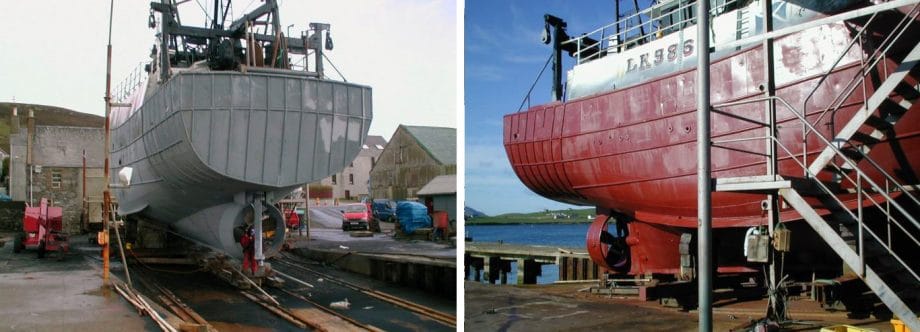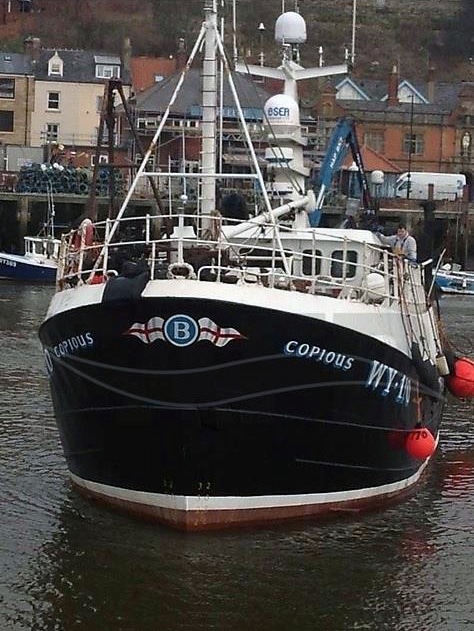Over 15 years ago, Promain were contacted by a Scottish fishing company looking to cold galvanise one of their fleets fishing trawler boat hull. Working as a pair, the company wished to treat one of the boats with the Zinga 96% Zinc Cathodic Protection, and as a test, keep the second boat maintained by standard means.
MV Copious – a Pelagic Fishing Trawler and its sister ship
Pair trawlers are trawling ships which operate together towing a single trawl. They keep the trawl open horizontally by keeping their distance when towing. As both boats would have the same use, this gave the coating a suitable environment to be test in. These pelagic trawlers would be tending to spend longer periods at sea, generally collecting schooling-fish such as whiting or herring.
She came into Lerwick harbour in 2001 to have her port bow re-plated following damage.
What Is Zinga Cold Galvanizing?
Zinga‘s unique formula provides environmentally safe cathodic protection to steel. It is comparable with hot-dip galvanising. The advantage is that you can apply it as though it were a paint.
Passive protection, such as paints and cladding, creates a “barrier” between the steel substrate and the elements. Once this barrier is under attack then the moisture and atmospheric salts will be able to start corroding the steel beneath the damaged metal. This corrosion will then begin to creep extensively beneath the coating.
With Zinga, the organic binder and the zinc oxide layer that forms on the surface create an impervious barrier by blocking the zinc’s natural porosity with oxide particles. Unlike other passive coatings, once breached the zinc oxide layer simply renews itself by re-oxidising. This layer of oxides is the reason behind the matt appearance of Zinga as opposed to the shiny hot-dipped finish.
More information in regards our Zinga cold galvanizing system can be found here.
Preparation & Coating
In 2001, it cost roughly £4600 to blast clean and coat the MV Copious with Zinga. This cost also included the finishing topcoats.
Once the boat had gone into dry dock, initial welding was performed to repair a large section of damage at the front of the trawler. Afterwards, the entire hull is shot blast using specialist equipment. This is to bring the boat to SA2.5 cleanliness specifications. This process ensures the removal of all rust completely.
Using a conventional spray gun, the Zinga 96% product was applied incorporating 10% of Zinga Solv Thinner.


Lifespan of The Boat Hull
After 10 years of service, the boat owners had spent nothing on boat hull maintenance. With an expected lifespan of 25 years, the cost benefits of a complete treatment of the boat hull with Zinga 96% Zinc Cathodic Protection are unsurpassed.
Her sister ship had over £14,000 spent on maintenance during this time, including two propeller changes. As you can imagine, having the boat out of the water also effects profits.
 Do you have a boat hull that could benefit from Zinga cold galvanizing treatment? Contact our technical team today to discuss your requirements. Either call us on 01462 421333 opt 2 or visit our contact page here.
Do you have a boat hull that could benefit from Zinga cold galvanizing treatment? Contact our technical team today to discuss your requirements. Either call us on 01462 421333 opt 2 or visit our contact page here.
Want to read more Zinga articles? Read these:




